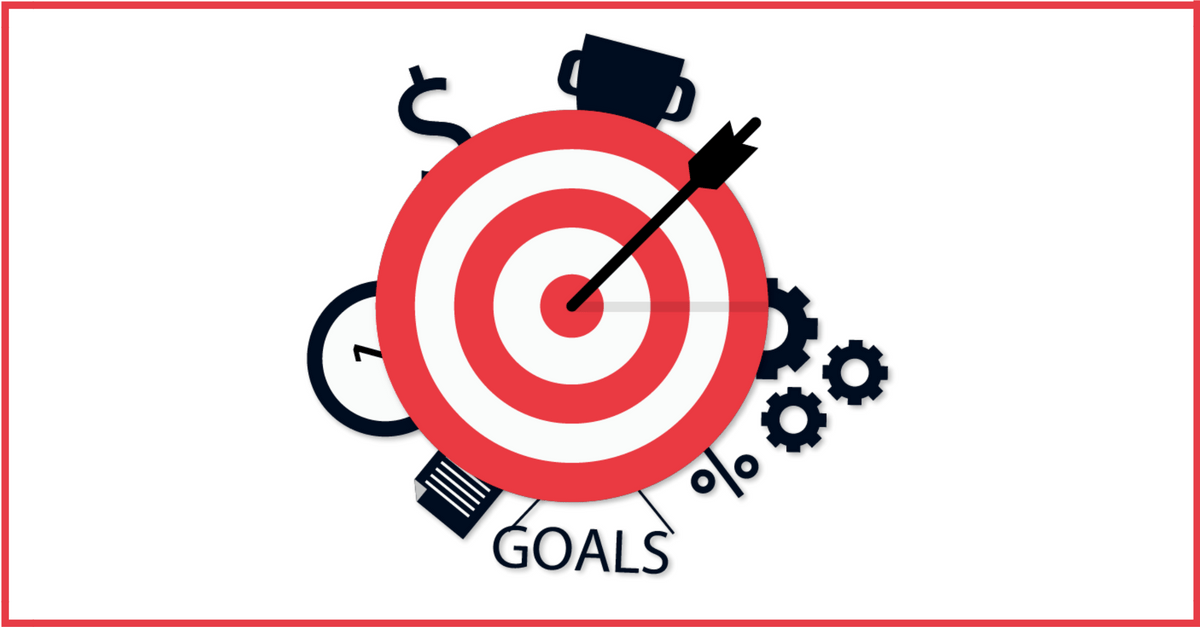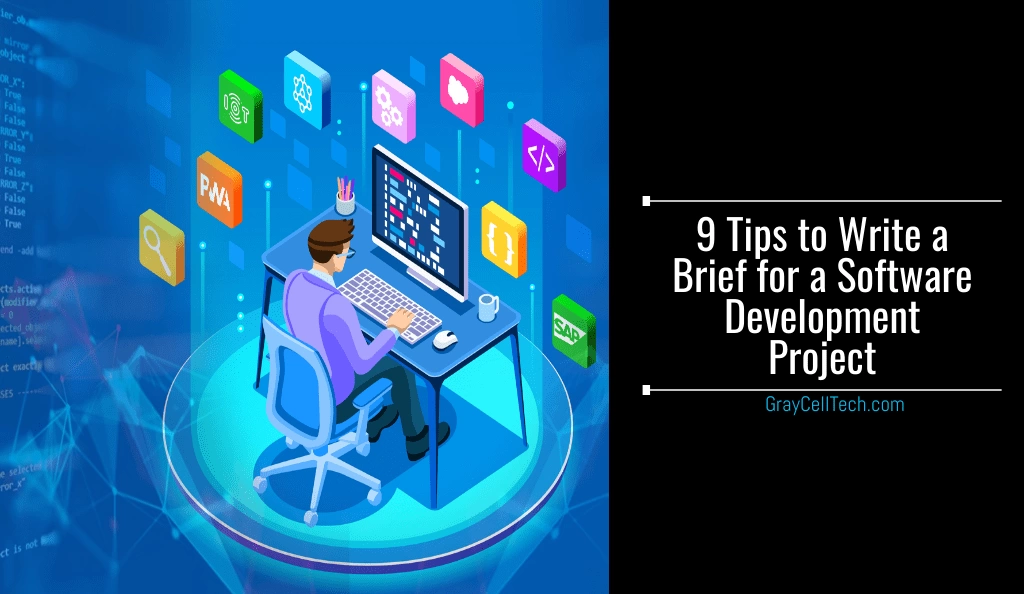Every software development project needs to have a starting point, and it should be a software development project brief. This document is a valuable asset that both the clients and software developers will use to understand each other, set mutual goals, and successfully carry out the project. That means that for your project to be a success, you need to learn how to write a great project brief.
To help you out, we’ve put together this ultimate guide for writing a brief for a software development project. Keep reading to learn about the 9 ultimate tips for writing a brief that will ensure great project communication and information flow.
Let’s break it down.
What is Project Brief?

Let’s start by defining and understanding what exactly is a project brief. This will help us create better project briefs for all our software development projects.
A project brief is a document that outlines the basic idea of your project and provides all the essential and necessary information about it.
That means that a good project brief will contain all the data and information we need to understand it completely and decide whether or not it’s a good fit for us.
Why Do You Need a Software Development Project Brief?
The answer to this question is very simple- you don’t want any misunderstandings.
A project brief will help both sides involved to be on the same page, share mutual goals, and understand each other’s needs.
Here what that means:
- you’ll set clear mutual goals
- you’ll understand the process from beginning to end
- you’ll understand the phases of project development
- you’ll be able to negotiate about the points you dislike or want to change
Regardless of the side of the project you’re on, a project brief will give you the information and tools to make the most out of the deal and make sure you end up satisfied with the results.
Who Should Write a Software Development Project Brief?
There are two sides to each software development project. There are clients who need the services of a software developer and the software developer (or a company) that provides those services.
Both sides could write the software development project brief.
The client will write it to:
- explain their needs
- request specific services
- discuss project requirements
The software developer will write it to:
- make an offer
- explain how they plan on carrying out the project
- explain the process of project completion
In both cases, the software development project brief is there to provide clarity, understanding, and build a bridge between the two parties to ensure they understand each other’s needs.
How to Write a Brief for a Software Development Project?

Now it’s time for us to take a look at the actual steps in the process of writing a top-notch brief for a software development project. Here are the basic points you’ll have to cover:
- Project Overview
- Project Goals
- Specific Features
- Project Mockup
- Project Target Audience
- Current Data & Numbers
- Project Schedule
- Project Budget
- Proofread & Edit for Clarity
Let’s take it one step at a time.
1. Project Overview
The first section of your software development project brief should be a neatly-organized project overview. It should briefly describe the most important aspects of the project.
That includes:
- the “big picture” of the project
- who is the client
- who is the project carrier
- what is the general idea behind the project
This is the introductory segment that doesn’t go into many details but simply prepares the readers for the upcoming section.
2. Project Goals

To define the goals clearly, make sure to separate them using bullet points or subheadings. There could be dozens of different goals for your project:
- developing a new application for language learning
- updating an existing application by adding specific features
- developing software tools for a specific target group
- creating a new website for an E-commerce company
You could have one or several different goals, but make sure you describe them clearly and precisely in this part of your software development project brief.
For example, if you need a new application, you’ll have to write more than just, “We need a new application.” You’ll also have to cover:
- Why do you need a new application?
- What new features do you need?
- What do you want your customers to use it for?
So, you’d write something like:
- We want an application that our customers would use to track their order status, change delivery preferences on their own, and contact customer support via chat.
Your goals need to be specific and elaborate enough for the other party to understand.
3. Specific Features
Your software development project brief should include the specific features you expect to see and be able to use. This section is where you go into greater detail about the distinguishing features you want to see.
What does that imply? Here’s what:
- specific features you need
- specific features you’d like but aren’t obligatory
- features prioritization
- bonus features
Classify your features into several categories according to their importance for the project you have in mind.
This way, the developers will know what to focus on and what to put into the secondary importance file. This will ensure maximum satisfaction on both sides of the project.
4. Project Mockup
A project mockup is a visual representation of the project that is supposed to help the developers understand exactly what you want them to do.
It will help you bring the project closer to them and explain your ideas, needs, and goals in a visual manner.
Therefore, you should definitely include a mockup in your software development project brief. Here’s what that implies:
- sketches
- charts
- diagrams
- illustrations
- wireframes
- semi functional user interfaces
This will help everyone get a better understanding of the project without having to build it first. Depending on your time and skills, you can create simple hand-drawn mockups or complex professional mockups.
The important thing is that you show what the project is about in a visual manner.
5. Project Target Audience

Now it’s time for you to write about the specific target audience that this project is supposed to aim at. That means you’ll need to define the potential customers or users that will hopefully use the new software, app, website, or tools.
When you’re defining the target audience, you have to define the specific characteristics that the software developers need to consider when working on the project. That includes:
- age
- sex
- location
- native language
- social status
- education
- background
- online behavior
- shopping habits
- technical literacy
- occupation
- pain points
- goals
Pay special attention to the target audience’s pain points since your project should aim at solving or eliminating them.
Here’s a couple of pain points examples:
- they find your existing website too confusing
- they don’t like certain app features
- they want you to speed your website up
- they want new tools they could use
Whatever information you have on your target audience, make sure to share it in the project. This way, everyone involved will have a much better understanding of the overall situation and will be able to contribute to the project.
6. Current Data & Numbers
If you have any type of valuable data that could further explain the importance of the project, make sure to share it in the brief.
For example, you could have a software tool that your customers are using, but you aren’t happy with the:
- number of monthly users
- premium subscriptions
- customer feedback
Include any measurable data that you have to make sure you explain the current situation as well as you can.
Measurable data is specific, concrete, and helps both parties define the situation as it is.
7. Project Schedule
The project schedule should be included in the project brief to make sure everyone involved is happy with the final results.
The schedule should break down and describe the flow of the project, including the following:
- different phases of project development
- a deadline for each phase
- estimated time for project conclusion
- final deadline
The phases should also be further defined to make sure both parties can keep a clear track of the project development. That includes:
- gathering the tools, resources, and creating a project team
- doing research and preparing for project initialization
- project development
- project testing
- fixing bugs and errors
- project deployment
Both parties should agree on specific deadlines for each phase of the project and thus conclude a mutual agreement on the project timeline.
8. Project Budget

Naturally, no software development project can be completed without money resources. This is why your project brief needs to discuss a specific budget and define what resources you plan to invest in it.
Also, keep in mind that the budget will define the quality of the product, so make sure you set your budget accordingly and even leave some room for negotiation.
Here’s what you need to define:
- cost estimation for specific elements of the project
- overall total budget
- project priorities in case the fixed budget doesn’t cover everything
When you’re deciding on a budget, it’s best that you decide what are the most important project features for you and define them as such.
This way, the software development team will know how to plan their resources, what technology to use, and what to focus on primarily.
Without a budget plan in your software development project brief, you’ll be leaving room for a lot of misunderstandings and ambiguity.
9. Proofread & Edit For Clarity
When it comes to writing a software development project brief, you have to set your standards high in terms of clarity and professionalism.
That means that you have to write and present your project like a professional. Here’s what that means:
- organize your project brief into clearly labeled sections
- make the sections headlines self-explicatory
- use bullet points to organize separate ideas and thoughts
- write concisely and to the point
- omit redundant information
After you successfully finish writing the first draft of your software development project brief, you need to make sure you edit it to perfection.
That includes:
- reading it out loud
- removing or changing phrases you don’t like
- rearranging sections
- creating a better flow of the brief
Finally, once you feel like your software development project brief is complete, you need to proofread it for:
- typos
- spelling mistakes
- grammar mistakes
- vocabulary issues
A writing service such as TopEssayWriting could help you create software development project brief templates and use them for all future references. Check it out if you feel like you could use some help.
Once you finish proofreading your software development project brief, you can say that it is finally complete and send it on to the next person.
Without this professional approach to project brief writing, you won’t have as much success in sealing the deal with people who are also professionals in what they do.
Final Thoughts
As you can see, writing a software development project brief is a complex process that requires pre-planning, outlining, brainstorming, data gathering, and organizing. Still, the hard work of creating the project brief will be worth the effort since it will ensure successful communication and, potentially, project completion.
Use the tips we’ve shared above to create your own strategy for writing a software development project brief. Use this strategy for writing all future project briefs, and you’ll soon master these skills completely.








